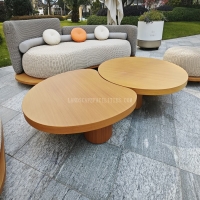Welcome to the website for landscape facilities products and knowledge.
What are the most common augmented reality overlays used with the Landscape Round Table?
The Landscape Round Table represents a revolutionary platform for spatial planning and design, with augmented reality overlays transforming how professionals interact with physical landscapes. Among the most prevalent AR overlays are 3D terrain mapping visualizations that convert topographical data into interactive digital landscapes, allowing designers to manipulate elevation and contours in real-time. Virtual vegetation and planting simulations enable landscape architects to preview mature plant growth patterns and seasonal changes before physical implementation. Hydrological modeling overlays demonstrate water flow dynamics, drainage patterns, and flood risk assessment with remarkable accuracy. Infrastructure integration overlays reveal underground utilities, proposed structures, and transportation networks in relation to existing landscape features. Environmental impact projections display climate change scenarios, sunlight patterns, and wind flow simulations across different seasons. Collaborative design interfaces allow multiple users to simultaneously manipulate virtual elements while maintaining spatial awareness of the physical environment. These sophisticated AR implementations significantly enhance decision-making processes, reduce planning errors, and improve stakeholder communication across urban planning, environmental management, and landscape architecture disciplines. The technology continues to evolve with advancements in real-time data processing, gesture recognition controls, and multi-user collaboration features that further bridge the gap between digital planning and physical implementation.
Related search:

Recommendation
Elliptical metal outdoor table with nested design, resembling wood grain, round table